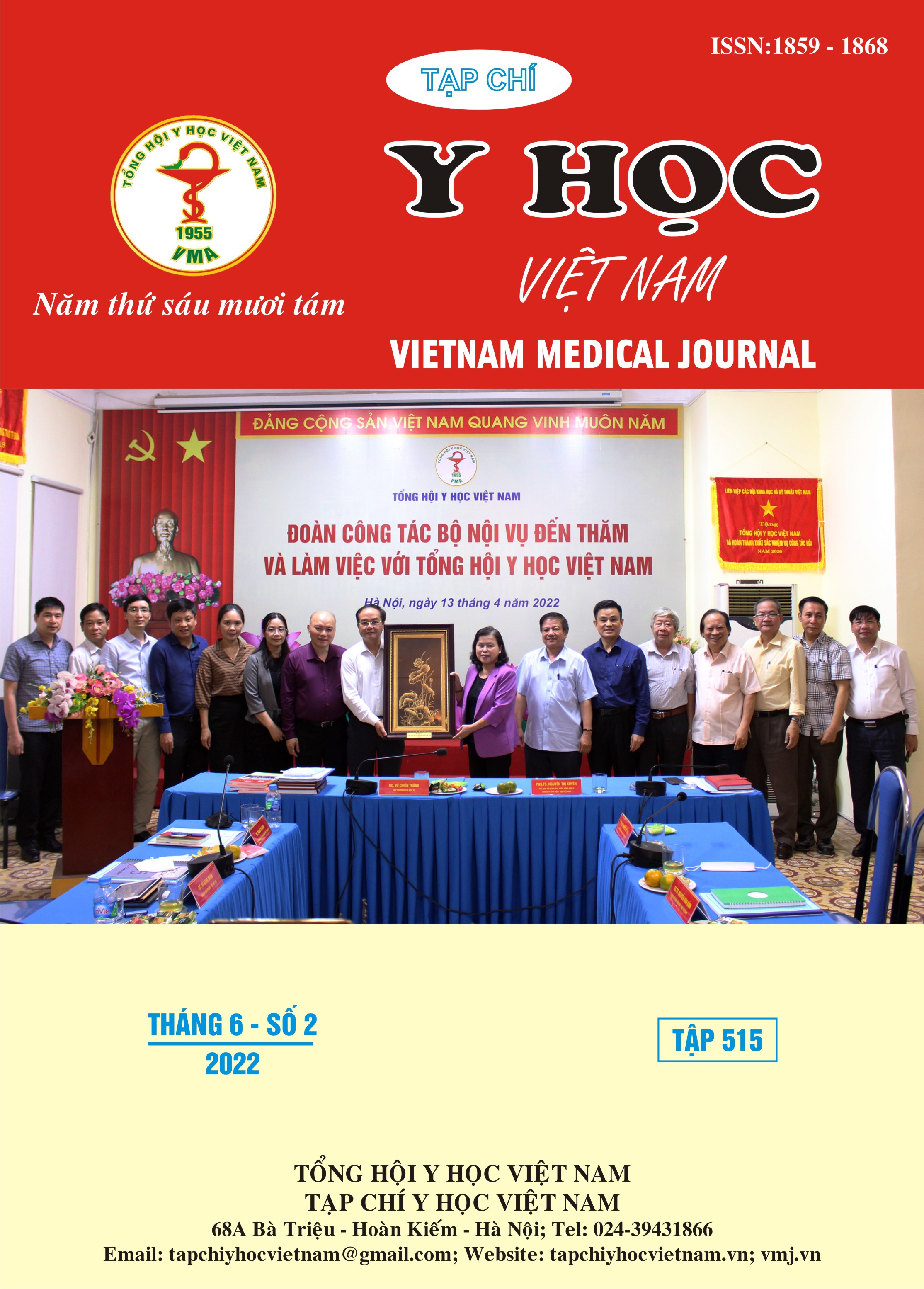THE ASSOCIATION BETWEEN SOME SUBCLINICAL CHARACTERISTICS AND PET/CT IMAGING IN PATIENTS WITH POST MYOCARDIAL INFARCTION
Main Article Content
Abstract
Objectives: To investigate some subclinicals characteristics and its association with PET/CT imaging in patients with post myocardial infarction. Subjects and methods: This cross-sectional study included 45 patients with post myocardial infarction who were treated in Cardiology Institute, 108 military hospital from 2011 to 2015. Clinical, subclinical findings were collected and myocardial perfusion SPECT was undergone. 18F-FDG cardiac PET/CT was evaluated to assess myocardial viability and coronary angiography was done for patients who had indication. Results: No differences was found in each parameters of EFsp (ejection fraction), end diastolic volume (EDV), end systolic volume (ESV) among 3 groups (scar group, hibernating group and mixed (hibernating and scar) group). No different was seen in the presence of myocardial hibernating and myocardial scar between patients with chronic total occlusion coronary artery (CTO) suplied with collateral flow and those without collateral flow (p>0,05). Conclusion: In the assessment of myocardial viability, the severity and characteristics of lesions on coronary angiography did not reflect the presence of myocardial viability assessed by 18F-FDG PET/CT. The degree of left ventricular dysfunction on echocardiography were not associated with the presence of myocardium viablility assessed by 18F-FDG PET/CT.
Article Details
Keywords
Viability myocardium, 18F-FDG PET/CT, Myocardial perfusion SPECT/CT, acute myocardial infarction
References
2. A. Kositwattanarerk, C. Sritara and P. Sritara (2009), Correlation between myocardial perfusion
imaging findings and cardiac events. J Med Assoc Thai, 92 (11), 1470-1475.
3. R. C. Hendel, D. S. Berman, M. F. Di Carli. et al (2009), ACCF/ASNC/ACR/AHA/ASE/SCCT/ SCMR/SNM 2009 Appropriate Use Criteria for Cardiac Radionuclide Imaging: A Report of the American College of Cardiology Foundation Appropriate Use Criteria Task Force, the American Society of Nuclear Cardiology, the American College of Radiology, the American Heart Association, the American Society of Echocardiography, the Society of Cardiovascular Computed Tomography, the Society for Cardiovascular Magnetic Resonance, and the Society of Nuclear Medicine. J Am Coll Cardiol, 53 (23), 2201-2229.
4. J. A. Spertus, E. Peterson, J. S. Rumsfeld. et al (2006), The Prospective Registry Evaluating Myocardial Infarction: Events and Recovery (PREMIER)--evaluating the impact of myocardial infarction on patient outcomes. Am Heart J, 151 (3), 589-597.
5. Lê Ngọc Hà (2015), Nghiên cứu ứng dụng PET/CT sử dụng 18F- FDG trong bệnh nhồi máu cơ tim, ung thư hạch và ung thư đại – trực tràng. Chương trình KH& CN trọng điểm cấp nhà nước, BVTƯ QĐ 108,
6. L. Wang, M. J. Lu, L. Feng. et al (2018), Relationship of myocardial hibernation, scar, and angiographic collateral flow in ischemic cardiomyopathy with coronary chronic total occlusion. J Nucl Cardiol
7. W. Dong, J. Li, H. Mi. et al (2018), Relationship between collateral circulation and myocardial viability of (18)F-FDG PET/CT subtended by chronic total occluded coronary arteries. Ann Nucl Med, 32 (3), 197-205.


